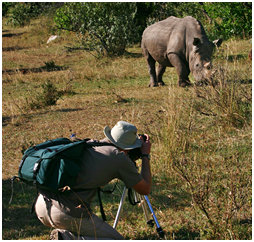 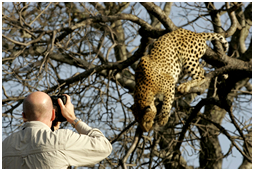 |
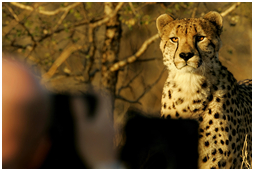 |
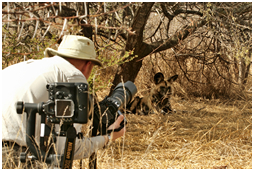 |
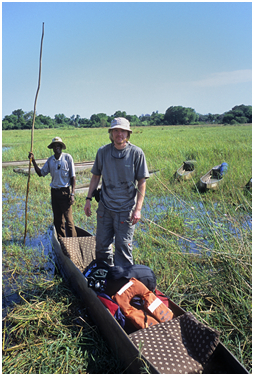 |
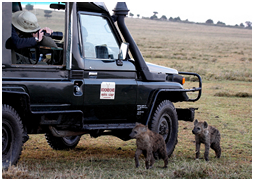 |
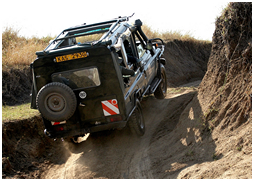 |
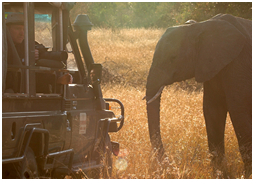 |
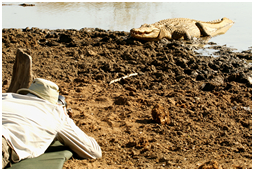 |
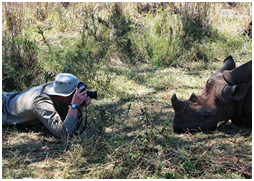 |
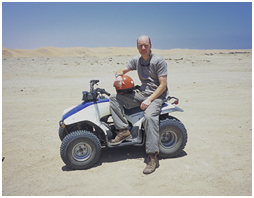 |
Biography
A little about me and the images on this site.
My interest in photography goes back to 1985 just after I started work and for the first time had a little money in my pocket. The first 22 years (eek!) involved loading canisters of film into the camera every 36 exposures and then having to wait a week or two to see the results. How things have changed, but the technical, artistic and logistical challenges remain largely the same. The pictures on this site are therefore a mixture of one’s shot on film and then scanned (typically via a Nikon Coolscan 5000ED), and those taken with a digital camera. Since the late 1990s about 99.9% of my photography has been of wildlife and associated subjects, and it is this that is the primary focus of this site. For those interested in such things all of my images are captured using a Nikon based system, I don’t plan to dwell on this aspect here as I don’t feel that the brand of camera is that important other than secondary aspects such as reliability, system coverage and ‘feel’. The critical things are getting into a position to capture the image, knowing your subject and kit, whatever its ‘colour’, to be able to capture the image that you visualise before it is gone. Sometimes opportunities are incredibly fleeting and there is rarely a second chance.
I am not sure if it is a consequence of my roots with film, or perhaps the fact that I use a computer daily as part of my ‘day job’ and consequently the thought of using one any more that necessary for my photography holds little appeal, or perhaps there is some other reason, but you will not find scores of heavily manipulated images on this site. That is not to say that software packages such as Photoshop are not valuable tools which are capable of stunning results, no, it is simply a reflection of the fact that for me photography is my hobby, my escape time, and I get no enjoyment from such pursuits. So I rarely do them. That does not mean that the images here are not electronically processed, they are, probably every one of them. But this processing is generally limited to adjustment of levels, compositional cropping, gentle sharpening, etc. Raw files straight from the camera are not meant to be used without some post processing, and I never shoot anything serious in JPEG mode. I will rarely spend more than 3 or 4 minutes working on a single picture, and in most cases it would be far less than that. So, this means that the pictures you see here are a very good representation of the photons recorded by my film or sensor, and of what I visualized through the viewfinder. For those interested most of my post processing is done with Nikon Capture NX2 software, I find it easy to use, it is obviously fully compatible with my images and it does 99.99% of what I need (it is also totally non-destructive which is something that I find very appealing). It is an amazing sophisticated and flexible tool with a deceptively simple user interface. I do have an older version of Photoshop should the need arise, but this is used very infrequently.
I will also endeavor to make it clear whether a picture is of a wild or captive subject. I have no problem with either approach provided that the subject's welfare is never compromised for the sake of getting the shot. I do however have a huge issue with people taking pictures in captivity and then presenting them as being wild. There is just no justification for this, it gives everyone a bad name, and from my experience getting good images of captive subjects can often be more difficult than it is in the wild (unless of course you are lucky enough to visit a specialist game ranch where images can be planned, rehearsed and then shot, almost as if using human subjects). That is a real can of worms! Worse still is the despicable practice of getting pictures at the expense of the wellbeing of the subject, chilling insects or reptiles, disturbing nesting birds, habitat destructions, etc.. This is never excusable.
Photography, for me at least, is a very introverted and isolating pastime. I will happily spend hours waiting for something to happen or a week or two away in some wild corner of the world on my own in the pursuit of my pictures. That said there are many others who take a less active role but can still have a huge impact on both the output quality, and the enjoyment of my photography. I therefore dedicate this site to those people. Firstly to my wife, Diane, the boundaries of whose patience and understanding I am constantly testing. Secondly to the myriad of wonderful people (guides, trackers, drivers, spotters, travel industry workers, fellow travelers, local peoples, conservation workers, etc.) that I rely on or meet on my travels. Whether it is at a local zoo, or in some distant land, it has been wonderful meeting you all and many have become treasured friends.
So, I shoot “wildlife”, sometimes in the wild, sometimes captive. But, what is “wild”? What is “captive”? What is “real”?
Before we get into that, one thing I would like to make clear is that very few, if any, pro wildlife photographers shoot everything in the wild with no human intervention or control. Many of these stunning calendar shots we see and admire every day are planned, set up and shot. Much like a glamour photographer would go about a fashion shoot. So if you are just starting out, or don’t have the finances to travel to some distant corner of the world, don’t despair. Simply respect your subjects and enjoy your photography.
When I decided to set up this site one of my earliest decisions was that the ‘status’ of each subject should be clear to the viewer i.e., whether the picture was taken in the wild or in a captive situation. “Easy” I thought, simply caption each picture. At that I left the subject and switched my attention to other, seemingly more challenging, matters. If only life was so simple.
When I started to prepare images for the site it quickly became clear that simply categorising each one as “wild” or “captive” was not actually so straight forward. Sure, many of them were easy, Masai Mara = wild, Chester Zoo = captive, and so on. But some images fitted into something of a grey area between the two. For example, what about animals photographed on a private game ranch in South Africa? Some were obviously captive, kept in pens (albeit very large ones) and depended on keepers for their food. But the herbivores were free to wonder and fend for themselves, and there were predators around so it was not like a zoo. And how about the crocodile living in the waterhole on the ranch or the vultures flying in to feed on a carcass? Well the vultures were clearly wild, and arguably so was the croc, his world did not stretch as far as a distant fence. But where do you draw the line. Easy I thought, the animals are fenced in and therefore confined, therefore they are captive. But if that was to be my definition of “captive” it would cause other issues. The Nakuru National Park in Kenya is fenced, primarily to protect the rhino from poachers, but it is fenced nonetheless. There are predators and prey living side by side with little or no day to day interference from man. These animals were clearly wild but contradicted my proposed definition. Closer to home too, how about a wild adder photographed in its natural habitat but whilst in the temporary custody of a researcher? That is more “captive wild”? So, I clearly needed to give this a little more thought and this is what I have settled on;
Wild (W) – the subject is totally responsible for its own day to day survival, find its own food and avoid predation. There is very little or no positive human interference.
Semi Wild (SW) – has characteristics of “wild” but with significant and / or regular direct intervention or restrictions from man. So, the large herbivores on the South African game ranch or the adder mentioned above I will classify as “semi wild” to indicate significant human input. Conversely a subject that is impacted insignificantly by the human element, e.g., a vulture flying in to the ranch will still be classified a wild.
Captive (C) – significant dependence for day to day survival and not able to survive without direct and intentional human input. Therefore something like a black kite scavenging from refuse for most of its food wood not be captive (unless kept in an aviary). It could move on and find a living elsewhere but ‘chooses’ not to.
You may or may not agree with these classifications but that is not the point of them, the purpose of them is to provide a degree of transparency as to the context of a picture. Where this context is clear from the image and title a caption of (W) or (C) etc. may not be included.
In addition to “(W)”, “(SW)” and “(C)” you may also occasionally see “(M)”. This symbol identifies images that have been heavily manipulated i.e., includes parts from more than one original image and / or would not be readily recognizable from the original 35mm slide or RAW file. As I suggested in my introduction on the home page, images of this type will be very much the exception as it is an area of photography that holds little interest for me, preferring instead the challenge of getting the image right in camera. In the interests of clarity I think that it is worth restating here that just about every image on this site will have been processed or ‘manipulated’ in some way, it is a necessary evil when working with RAW or scanned files that the levels, white balance, some compositional cropping, etc. may require adjustment to get the image to look correct. I also occasionally need to remove dust spots, small distractions, etc. with a healing or clone tool. Captive birds of prey often have jesses when flying which can be distracting and may therefore be cloned out (this is pretty much the extent of my manipulations and is the primary reason for having an old version of Photoshop).
The bottom line to all of this rambling is that you, as the viewer, can have confidence and understanding of what you are actually viewing. There may be occasional errors or omissions (but hopefully not), but there will be no premeditated attempt to ever pass an image off as something that it is not, or to mislead the viewer regarding its authenticity.
Picture coding key
(W) = wild
(SW) = semi wild
(C) = captive
(M) = manipulated significantly
I do hope that you enjoy this site, I certainly enjoy capturing the images and being out and about.
